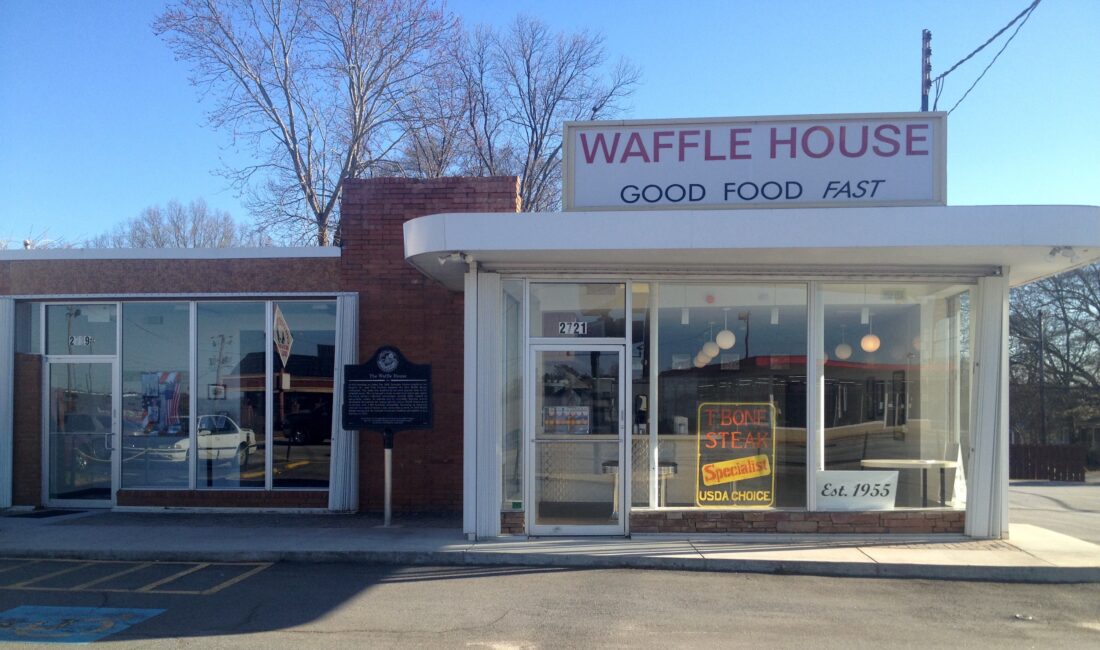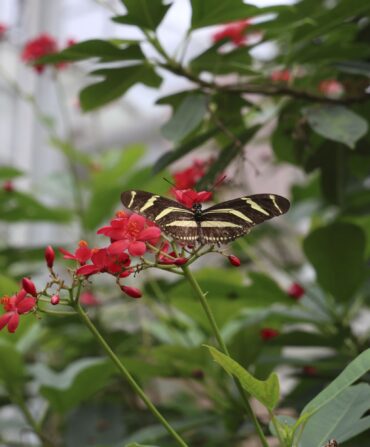The South has its fair share of museums dedicated to art, history, and the natural world. While the enrichment and inspiration these institutions provide are vital, the museums devoted to more esoteric interests—cats! kazoos! waffles!—add to the cultural conversation, too. Discover the fun, fantastical, and outright funky displays awaiting at these seven quirky Southern museums.

American Museum of the House Cat
Sylva, North Carolina

After folks walk under the watchful green-eyed gaze of a giant tabby painted around the American Museum of the House Cat’s front door, most head straight for the kitten mummy in the Egyptian section or the petrified cats, one from medieval England and another discovered in a Saudi palace. “We have museum exhibits and even a research library, but with our curiosities, like the preserved cats, we have a roadside-attraction atmosphere, too,” curator Julie Kimbrell says. Other highlights include cat cartoons by Victorian illustrator Louis Wain, an original Heathcliff comic sketch, a cat carousel (imagine a smaller version of the traditional amusement, with prancing cats to sit astride), and antique cat toys, and that’s just scratching the surface. “If it has to do with cats, we’ve got it in the museum,” says cat lover Harold Sims, the museum’s founder. And while it’s committed to cat culture—it’s the country’s only feline-focused museum—there’s a broader purr-pose too. It supports the area’s no-cage, no-kill cat shelter, Catman2, also founded by Sims.
Columbus, Georgia

Allen Woodall, the now eighty-nine-year-old founder of the Lunchbox Museum (part of the Columbus Collective Museums), routinely time-travels back to his childhood via a metal Dick Tracy lunchbox, the vintage find that lit the fuse on his current lunch-box fascination. “I look at it, and I’m back at my grandparents’ house, listening to the Dick Tracy radio show,” he says. Woodall founded the museum in 1990, and today, it’s the largest of its kind in the world, with more than three thousand lunch boxes displayed on floor-to-ceiling shelves, from late 1800s utilitarian dinner pails to more modern containers colorfully emblazoned with pop-culture icons like Hot Wheels, Woody Woodpecker, Superman, and the Beatles. There’s even a “Welcome Back Cotter” lunch box signed by John Travolta. Kaitlynn Etheridge, Woodall’s granddaughter who runs the museum with him, often watches people experience emotions like those that grabbed her granddad. “People find their old lunch box and get tears in their eyes,” she says. “Lunch boxes do more than make meals mobile. They’re expressions of personal interests; they’re art that happens to be functional. And they hold memories. That’s what we’re preserving and sharing.”
Oklahoma City

“A lot of people were introduced to banjo music by Kermit the Frog strumming ‘Rainbow Connection,’” says Lucas Ross, director of education and promotion at the American Banjo Museum. That’s why visitors to the 21,000-square-foot space are greeted by the affable amphibian (via video) before exploring the museum’s more than 350 banjos. The collection, including Earl Scruggs’s instrument, the only Gibson bass banjo (which never caught on), a banjo with an elaborate carousel scene carved into its pot, and the custom-made banjo awarded to Steve Martin alongside the Mark Twain Prize, is the world’s largest on display and highlights how the invention has diversified and evolved, adding its twangy, snappy sound to jazz, bluegrass, folk, and country. The museum is also ensuring banjo playing persists with its Pick a Tune teaching program. “It’s only an hour, and it’s free. We provide the banjos, and if you don’t learn to play a song, you get your money back,” Ross jokes.
Decatur, Georgia

In 1955, the first Waffle House fired up its griddle just outside Atlanta, and ever since, folks have flocked to the golden glow of the diner’s always-on signs at the now 1,900 outposts across the country. In the 1970s, the original Decatur spot closed, and in 2008, Waffle House Inc. made it into a replica of the 1950s Waffle House setup, complete with benches along the walls for those only having coffee. (Back then, they didn’t want morning coffee drinkers taking up valuable counter seats; there were no booths in the first locations.) Adjacent to the frozen-in-time diner is a museum with Waffle House memorabilia, including past uniforms and old menus showing when a waffle was 40 cents and a filet mignon was $1.50. (Note: The museum is only open on Wednesdays by appointment, which you can request on the website.)
McLean, Texas
When one of the first barbed wire salesmen found himself facing unimpressed buyers, he bet San Antonio cattlemen their biggest bulls and stampeding steers couldn’t break free from a corral made of the newfangled material. His gamble paid off; the wire didn’t budge, and soon, it was the region’s preferred fencing material. This story and more are told in the Devil’s Rope Museum fronting Route 66, its name a nod to religious groups at the time of barbed wire’s 1874 invention, who called the “vicious” thorny wire the work of the devil. The museum showcases thousands of examples with differing twist and barb patterns, including a rare late-1800s strand with round barbs mimicking boot spurs. A “war wire” section details the use of razor-sharp varieties in battle. And visitors can find wire sculptures of a cowboy hat, rabbit, armadillo, and scorpion alongside fence-building tools that share the barrier’s key role in settling Texas and the West. The Route 66 Museum, featuring hundreds of artifacts from the famed thoroughfare, also shares the Devil’s Rope building.
Seale, Alabama
Alabama artist Butch Anthony mixes his imagination with foraging, salvaging, and taxidermy skills to create paintings and sculptures in a style he’s dubbed “intertwangalism.” The made-up word fits his strange and thought-provoking works, many of which are on display at the drive-through version of the Museum of Wonder, created when the original museum’s many visitors became overwhelming. Open twenty-four hours a day, seven days a week, the repository of funky junk and folk art invites visitors to a DIY tour of scenes housed in shipping containers. Peer in to see wiry bird forms fashioned from scrap iron; collages combining discarded license plates, photos and bits of wood; and old portraits painted over with stark-white, stylized skeletons. Anthony’s studio and the original Museum of Wonder, holding more of his wild and wonderful art, are about a mile away from the drive-through and can be toured by appointment—it’s best to reach out through the “get in touch” form at museumofwonder.com.
Beaufort, South Carolina

The Kazoo Museum & Factory is constantly buzzing. The manufacturing facility for Kazoobie Kazoos turns out some five thousand new instruments daily, and annually, thousands of visitors explore the museum’s collection of nostalgic noisemakers, including 1930s-era European kazoos hand-painted with fairytale scenes, early 1900s Japanese fish-shaped kazoos, Teenage Mutant Ninja Turtle kazoos from the 1980s, and a rare 1940s Dagwood kazoo in the form of a sandwich, the most valuable item in the collection. The museum was added to the factory in 2014 to offer both kazoo history and hands-on experiences. During the behind-the-scenes factory tour, guests make their own take-home instrument, and the following kazoo jam session is a high note. “The group plays a song together, and you see adults revert to kids,” says marketing director Sarah Barnwell. “Playing a kazoo is pure joy, and that’s our job here: to spread happiness and keep the world humming.”








